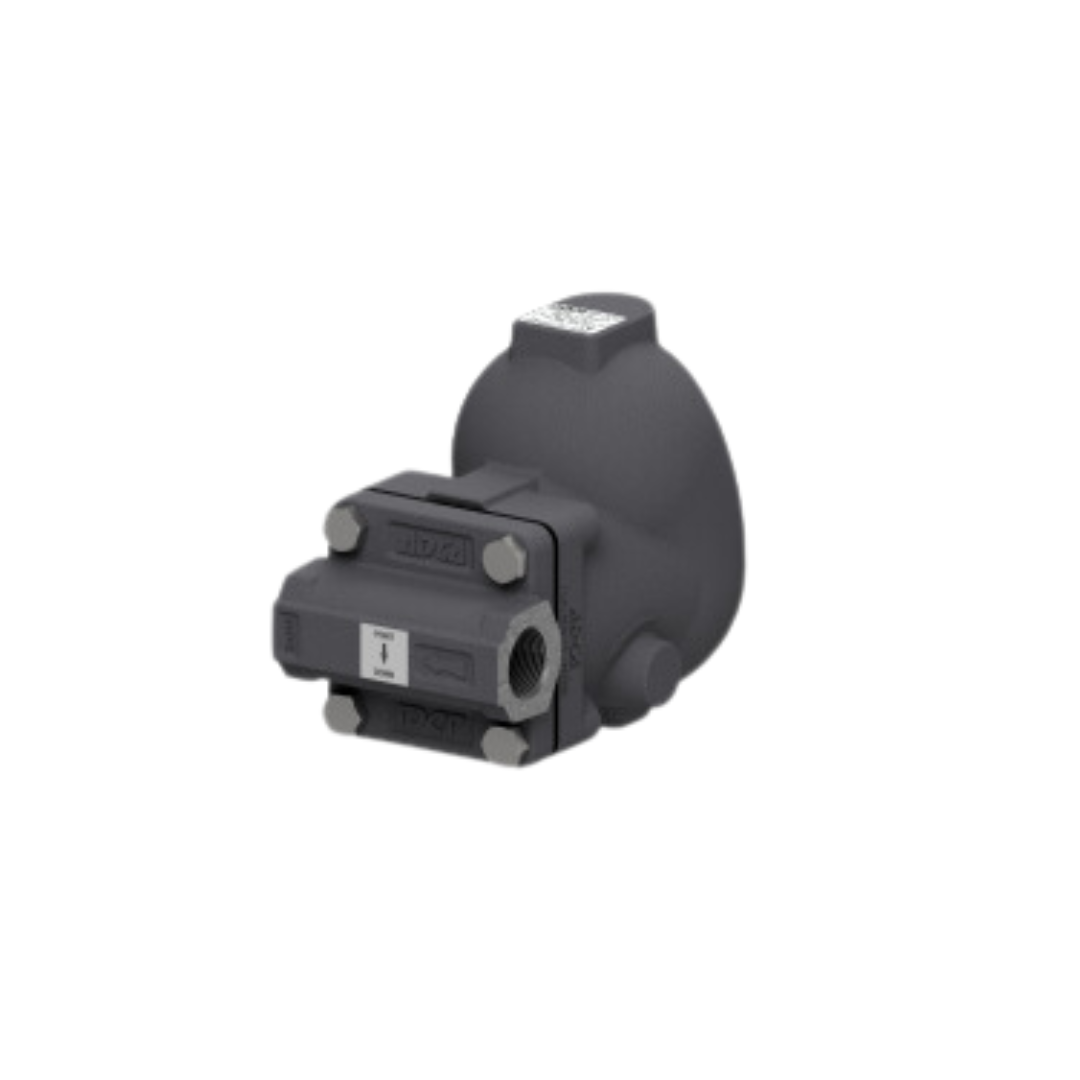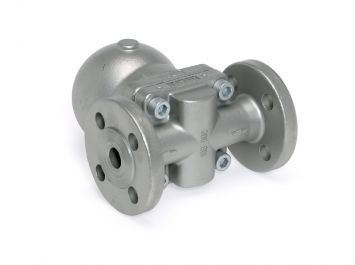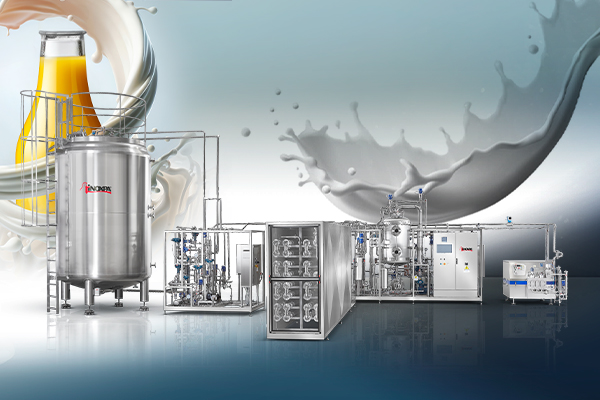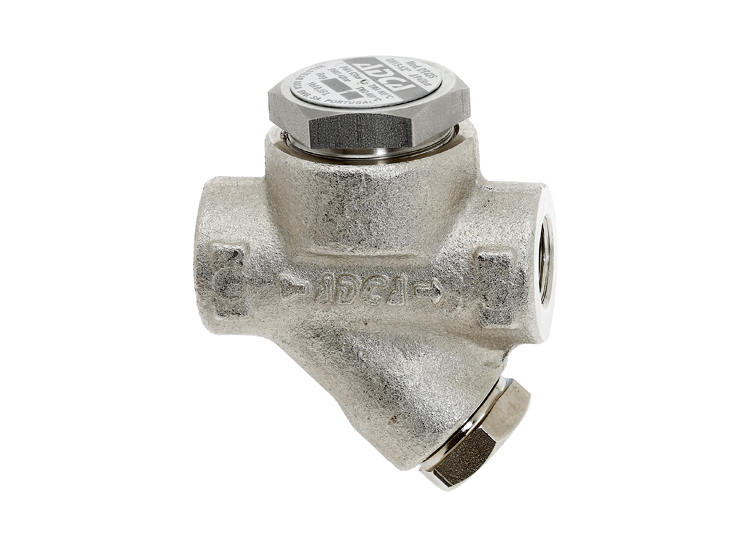
How Does a Ball Float Steam Trap Work?
Ball float steam traps are essential components in steam systems across various industries, particularly in sectors like brewing and distilling. These traps are designed to discharge condensate and air from steam systems while preventing the loss of live steam, maintaining the efficiency and functionality of the steam process.
The ball float steam trap utilises a simple yet effective mechanism. This type of steam trap has a ball float that rises and falls with the condensate level inside the trap. This float is connected to a valve that opens to discharge condensate when the float rises and closes when the float falls, preventing steam from escaping. This automatic operation helps to maintain consistent performance without the need for constant manual intervention.
Their reliability and low maintenance requirements make them an excellent choice for continuous operation in various applications where a continuous flow of condensate is present, to ensure systems run smoothly and efficiently. Ball float steam traps also contribute to significant energy savings, making them indispensable in steam-driven processes. Want to know how a ball float steam trap works? Here is a quick and easy guide to these simple but effective steam system components.
What is a Ball Float Steam Trap?
A ball float steam trap is designed to remove condensate and air from steam systems while retaining steam for efficient operation. At the heart of the trap is a spherical float that moves vertically within the trap’s chamber. This float is connected to a valve mechanism.
When steam condenses into water (condensate), the water level inside the trap rises, causing the float to rise as well. This upward movement opens the valve, allowing the condensate to be discharged from the system. As the condensate is expelled and the water level drops, the float descends, closing the valve to prevent the escape of live steam.
The design ensures continuous discharge of condensate as it forms, making ball float steam traps suitable for systems where condensate is produced steadily. Their ability to handle varying condensate loads without losing steam makes them highly efficient. This reliability and efficiency are why they are commonly used in industries such as distilling, where maintaining optimal steam system performance is critical.
How Does a Ball Float Steam Trap Work?
A ball float steam trap operates through a straightforward yet effective mechanism. Inside the trap, a spherical float is positioned in a chamber connected to a discharge valve. As steam condenses into water (condensate), the water level inside the chamber rises. This rise causes the float to lift, which in turn opens the discharge valve, allowing the condensate to exit the system.
When the condensate is expelled and the water level decreases, the float drops, closing the valve to prevent steam from escaping. This automatic operation ensures continuous discharge of condensate without losing steam, making the process highly efficient. The design accommodates varying condensate loads, ensuring reliable performance across different conditions.
Ball float steam traps are particularly suitable for applications with a steady production of condensate, such as in heat exchangers and steam lines. Their ability to handle a range of condensate volumes without manual adjustment makes them an excellent choice for maintaining the efficiency and performance of steam systems in industries like brewing.
The Main Functions of a Ball Float Steam Trap
A ball float steam trap’s primary function is to efficiently remove condensate from steam systems while preventing the loss of live steam. This helps maintain optimal steam pressure and energy efficiency. The trap automatically adjusts to varying condensate levels, ensuring continuous and reliable operation without manual intervention.
This means that ball float steam traps effectively handle air venting, reducing the risk of air accumulation that can hinder system performance. This makes ball float steam traps indispensable in applications where consistent condensate discharge is critical for maintaining system efficiency and reliability.
Where Are Ball Float Steam Traps Used?
Ball float steam traps are extensively utilised in industries where steam systems are used. They are particularly effective in environments with continuous condensate production, such as brewing and distilling. These traps are commonly installed in heat exchangers, steam lines, and processing equipment, ensuring efficient condensate removal and steam conservation.
In breweries, they help maintain the optimal operation of steam equipment, aiding consistent production and energy efficiency. Distilleries also rely on these traps to ensure consistent and reliable steam system performance, which is crucial for producing high-quality products.
The Benefits of Using Ball Float Steam Traps
Ball float steam traps offer numerous benefits, making them a valuable addition to steam systems. Their ability to discharge condensate without losing steam results in considerable energy savings and improved efficiency. The automatic operation reduces the need for manual intervention, lowering maintenance costs and minimising downtime.
These traps are highly reliable, handling varying condensate loads effectively, which enhances the overall performance and longevity of your steam equipment. Industries like brewing and distilling benefit from the consistent and efficient operation provided by ball float steam traps, ensuring optimal production processes.
Ball float steam traps are indispensable components in maintaining efficient steam systems. Their automatic operation and ability to handle varying condensate loads make them highly reliable. The low maintenance requirements and consistent performance of these traps are particularly beneficial in industries such as brewing and distilling, where optimal steam system operation is crucial.
Investing in ball float steam traps ensures that your steam systems run smoothly and efficiently, reducing downtime and maintenance costs. Whether used in heat exchangers, steam lines, or other steam-driven processes, ball float steam traps provide a practical solution for maintaining the reliability and efficiency of your steam systems. Their role in enhancing production processes and reducing operational costs makes them a valuable asset in any industry relying on steam power.



